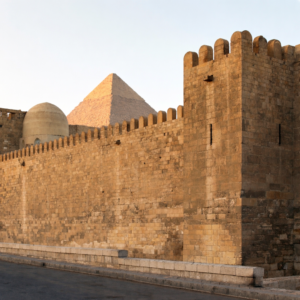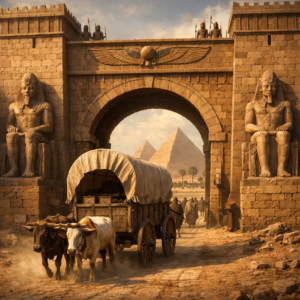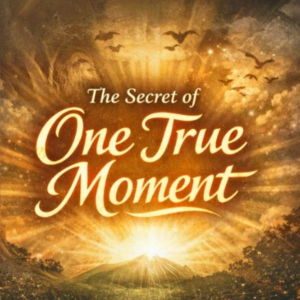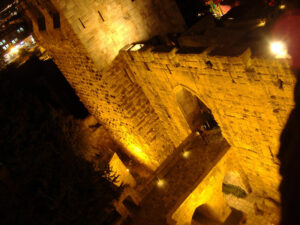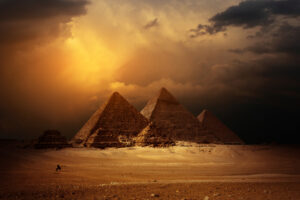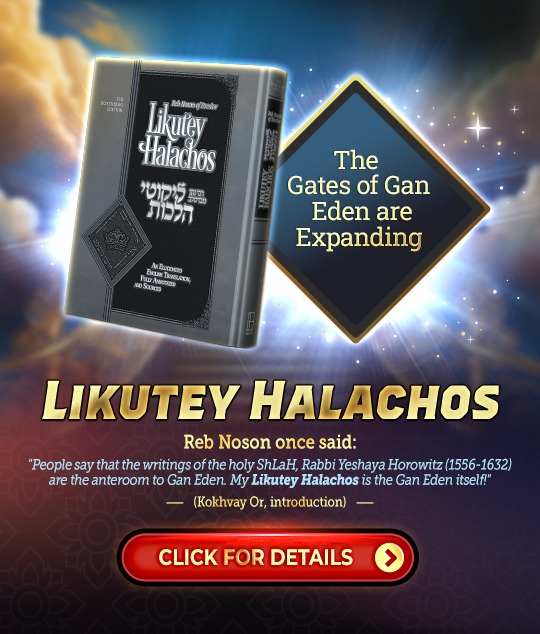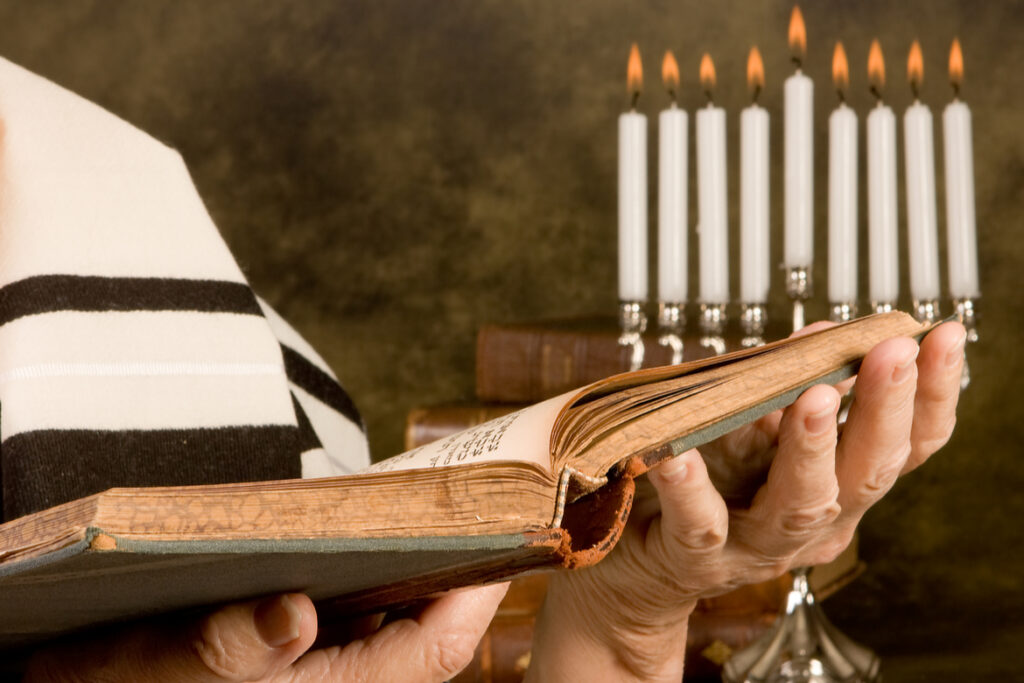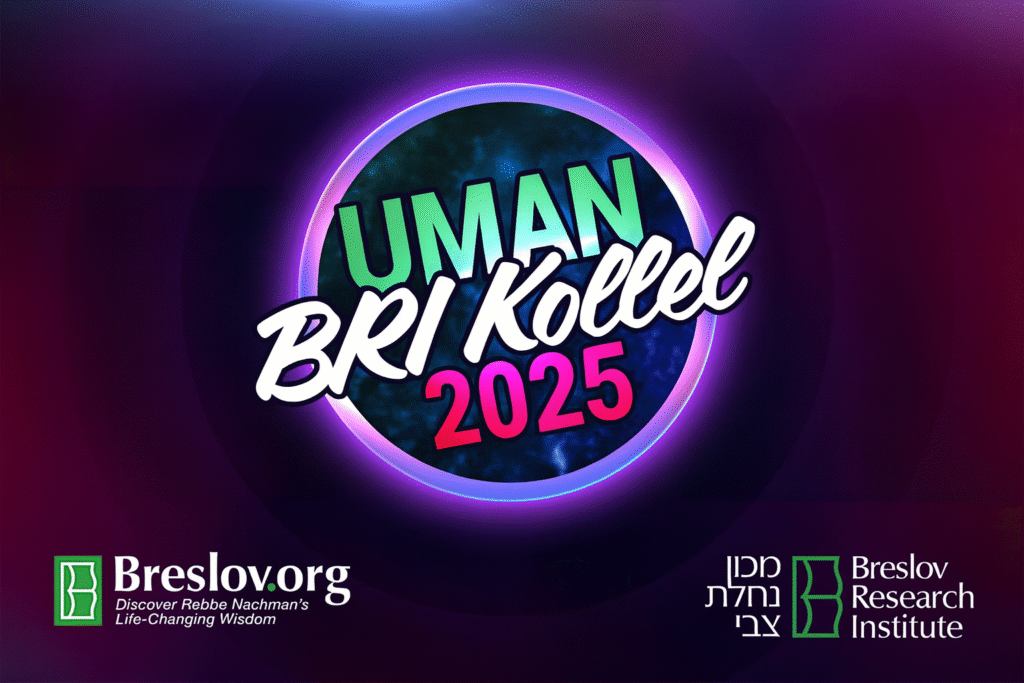- Joy ⬦ Read ⬦ Shabbat ⬦ Tzaddik ⬦ Weekly Torah Portion
Moshe’s Blessing
The Burden of Leadership
Parashat Devarim, read on Shabbat Chazon before Tisha B’Av, opens with Moshe Rabbeinu addressing the Jewish people as they prepare to enter the Land of Israel. He begins by expressing the impossibility of leading them alone: “I cannot carry you by myself.” To help, he recounts the appointment of leaders to assist in judging and guiding the people.
A Blessing Beyond Numbers
In verse 11, Moshe blesses the people:
“Hashem, the God of your forefathers, should increase you a thousandfold as you are, and bless you as He spoke to you.”
The wording “kachem elef pa’amim”—“as you are, a thousand times”—goes beyond physical multiplication. Rashi and the Midrash explain it as a wish for spiritual quality as well: not just more people, but more people of stature. Moshe wanted the future generations to mirror the greatness of those standing before him.
Chazal add another layer: the physical encampment of Bnei Yisrael in the desert, when multiplied 2,000 times, forms a circumference that circles the entire globe. This gives prophetic weight to Moshe’s words—the Jewish people will one day be scattered and influential across the entire world.
A Blessing Within a Blessing
Moshe’s “Limited” Blessing
After blessing the Jewish people with the words “may Hashem increase you a thousandfold,” Moshe adds, “and may He bless you as He spoke to you.” The Midrash, cited by Rashi, notes the apparent contradiction: Hashem had already promised Avraham that his descendants would be “like the stars of the heavens and the sand on the seashore”— countless and without limit. So why does Moshe offer a seemingly smaller blessing, placing a numerical value on it?
The answer, Rashi states, that Moshe gives is striking: “This blessing is from me, but the infinite blessing is from Hashem.” In other words, Moshe offers his personal wish for the nation—an immense blessing in its own right—but clarifies that the original, unlimited Divine blessing still stands.
Yet even this answer raises a question. Why offer a finite blessing at all, if Hashem’s infinite one is already in effect?
The Keter and the Paradox of Infinity
Rebbe Nachman, in Likutey Moharan Lesson 24, provides a powerful framework to understand this paradox. Hashem desires to shine His infinite light into the world, yet we live in a finite, limited reality. How can finite beings access infinite goodness without being overwhelmed or dissolved by it?
This is the purpose of the Keter—the Crown. In Kabbalah, the Keter is the first and highest sefirah, acting as a boundary between the Infinite Light and creation. Like a royal crown encircling the head, the Keter creates a space between Hashem’s boundless light and the vessels of creation that are meant to receive it.
When a person yearns for divine light—seeking spiritual growth, clarity, or salvation—he eventually encounters this barrier. He is bounced back by the Keter, unable to go further. But it is in this moment of recoil, Rebbe Nachman explains, that the person creates vessels to receive the infinite light. The experience of hitting a wall, and holding on with faith ,joy and holy yearning—this bounce back fills a person with illumination that they could never reach directly.
Pele, Alef, and Elef
Rebbe Nachman points out that the Keter is also called Pele—the wondrous, the unknowable. And Pele (פלא) spelled backwards is Alef (אלף), which also means elef, one thousand. The Alef is the first letter, symbolizing primacy and origin, just as the Keter is the first level of Divine emanation. And elef—a thousand—represents a significant quantity, one that marks a turning point in how we perceive value.
Thus, Moshe’s blessing of “elef pa’amim” isn’t just about physical numbers. It’s symbolic of accessing the first light, the Keter—the interface between the infinite and the finite. His blessing is a gateway to the wondrous.
Our task during the Three Weeks, especially on Tisha B’Av, is to cry over what we are missing and to express our longing for true spiritual guidance.
The Role of the Tzaddik: Bridging the Infinite and the Finite
Why Most People Can’t Handle the Keter
Reb Noson explains that while Hashem desires to shine His infinite light into creation, not everyone is equipped to receive it. When a person hits the wall of the Keter and is bounced back, the test is whether they can respond with joy and emunah. Unfortunately, most people fall into sadness, frustration or despair. They don’t realize that the setback is part of the process, part of the vessel that prepares them to receive this great light.
To endure this divine recoil requires simcha—only through joy can a person withstand the experience of being pushed back and still remain connected.
The Tzaddik Can Handle the Fall
This is why the tzaddikim are the true masters of the Keter. As Mishlei says, “Seven times the tzaddik falls and gets back up.” Their ability to endure countless setbacks with joy makes them the only ones capable of consistently accessing the Infinite Light. They know how to transform the frustration of spiritual failure into yearning. This is why Yosef HaTzaddik, for example, maintained joy even in the darkest dungeons of Egypt, despite all his suffering. His simcha drew people to him, and he became a beacon of grace and leadership.
The tzaddik doesn’t deny the pain—but instead of collapsing, he uses the pain to cry out to Hashem, to yearn deeper, and then begins again with joy.
Moshe’s Gift to the People
With this in mind, we return to Moshe Rabbeinu’s blessing. Hashem’s blessing is infinite—“as numerous as the stars and sand”—but how can the average person possibly receive such abundance? Moshe answers this with his own blessing: “May Hashem add upon you like you are, a thousandfold.” That “Elef-Alef-Pele-Keter”—is the key.
As Rebbe Nachman explains, elef (אֶלֶף) is the reverse of pele (פֶּלֶא), the wondrous and unknowable level of the Keter. Moshe Rabbeinu, as the ultimate tzaddik, had already accessed this level through his own struggles and triumphs. Now, he bequeaths it to the people—not the full Infinite Light directly, but the key to accessing it step by step. His blessing is the Keter in a form the people can handle.
He does this by invoking Yosef—“Yosef aleichem”—linking the Jewish people to Yosef HaTzaddik’s strength of joy and resilience. In doing so, he empowers the nation to receive Hashem’s infinite blessing by first receiving the vessel to contain it.
The Double Mourning of the Three Weeks
Reb Noson takes this further. During the Three Weeks leading to Tisha B’Av, we mourn not just the destruction of the Beit HaMikdash, but something even greater: the loss and concealment of the tzaddikim. The Midrash teaches that this loss is kiflayim—twice as painful as the destruction of the Temple.
Why? Because the tzaddik doesn’t just receive the light of the Keter—he brings it all the way down to the lowest places, to the most distant souls. And then, like a flame that arcs back upward, he ascends once again. The double movement—down and up—is what allows others to be uplifted. When we lose such tzaddikim, we lose not just their presence, but the very path to spiritual access and joy.
The Need for Vessels: Why We Crash Without the Beit HaMikdash
The Limits of Inspiration Alone
Yosef HaTzaddik represents the fire that awakens and inflames the Jewish soul with yearning and joy. But Reb Noson explains a painful reality: without the Beit HaMikdash, even the most powerful inspiration from the tzaddikim can’t be sustained. A person may encounter a tzaddik or learn his teachings and feel uplifted—but soon after, they crash. Why?
Because there is no vessel to hold the light.
The Beit HaMikdash, whose holiest place was built in the portion of Binyamin, served as that vessel. This is why Yosef cried on Binyamin’s “necks,” as Rashi explains: he wept over the destruction of both Temples, which were built in Binyamin’s territory. The Temple wasn’t merely a physical structure—it was a spiritual k’li, a heichal-chamber, designed to contain the immense joy and Divine light that the tzaddikim draw down.
Without that vessel, the light is overwhelming. It lifts a person for a moment—but then, lacking a structure to hold it, causes a collapse.
Why We Mourn Both: The Tzaddikim and the Temple
This is the deeper mourning of Tisha B’Av. We weep not only for the destruction of the Beit HaMikdash, but also for the concealment of the tzaddikim. Without the tzaddikim, there is no one to awaken us from our spiritual slumber. And even when we do experience a moment of illumination, we lack the Beit HaMikdash to hold onto it.
These two work hand in hand: the tzaddik is the light, and the Temple is the vessel. Without either, we are left in darkness and despair.
A Cry That Builds
But all is not lost. Reb Noson explains that crying itself—yearning, mourning, longing—is what opens the gates. When we cry over the loss of the tzaddikim, when we weep over our inability to hold onto the joy and light they reveal, we begin to rebuild.
As Chazal teach: Whoever mourns the destruction of the Temple will merit to see it rebuilt. The crying becomes a vessel. Reb Noson writes in Likutey Tefilot II:33 that when we recite the Midnight Lament and truly mourn the concealment of the tzaddikim and the Beit HaMikdash, we merit to have their light revealed to us again. Even amidst confusion—when it’s unclear who is a true tzaddik and who is not—the yearning itself brings clarity, light and eventually, redemption.
This is our task during the Three Weeks, especially on Tisha B’Av: to cry over what we are missing, to express our longing for true spiritual guidance and a vessel to contain it. And when we do, we begin to see the rebuilding—both of the Beit HaMikdash and of our own inner world.
Shabbat Shalom. May Hashem console us with true joy, and transform our ashes into splendor.
Meir Elkabas
- 0 comment


